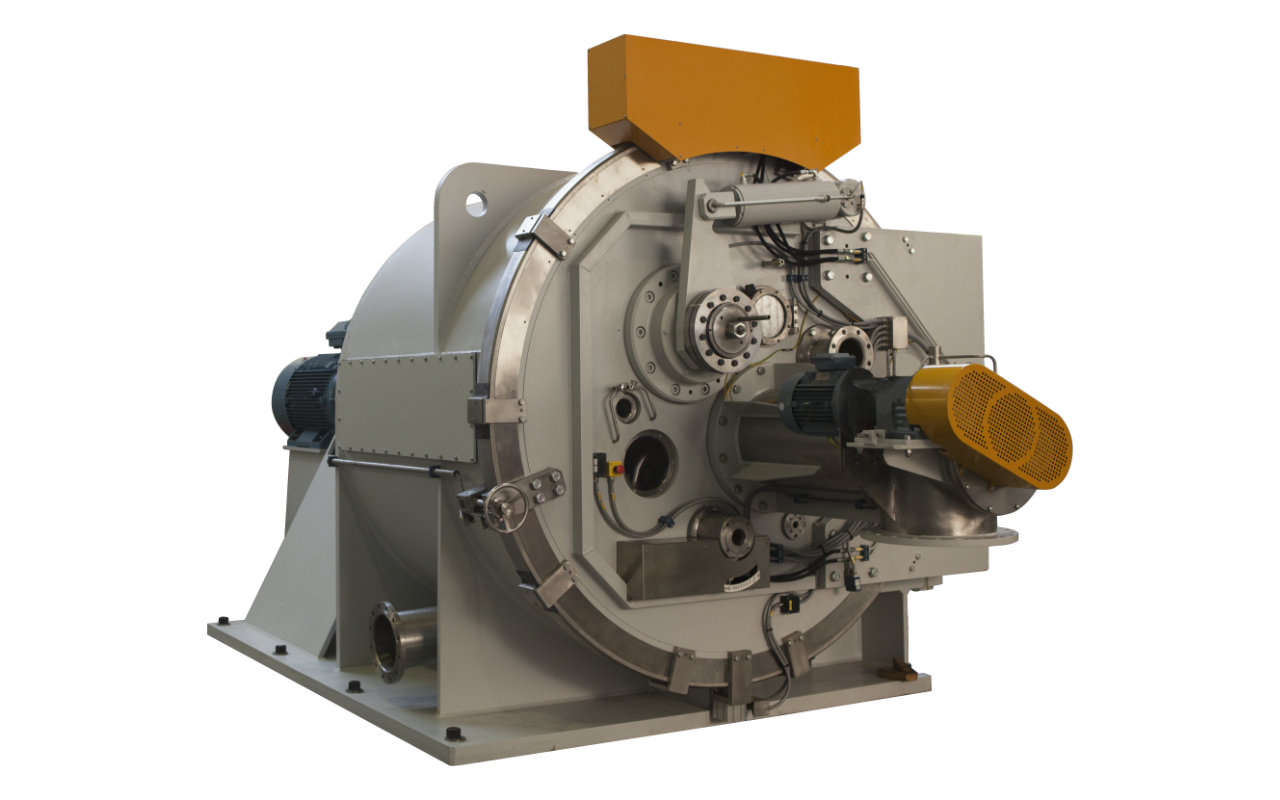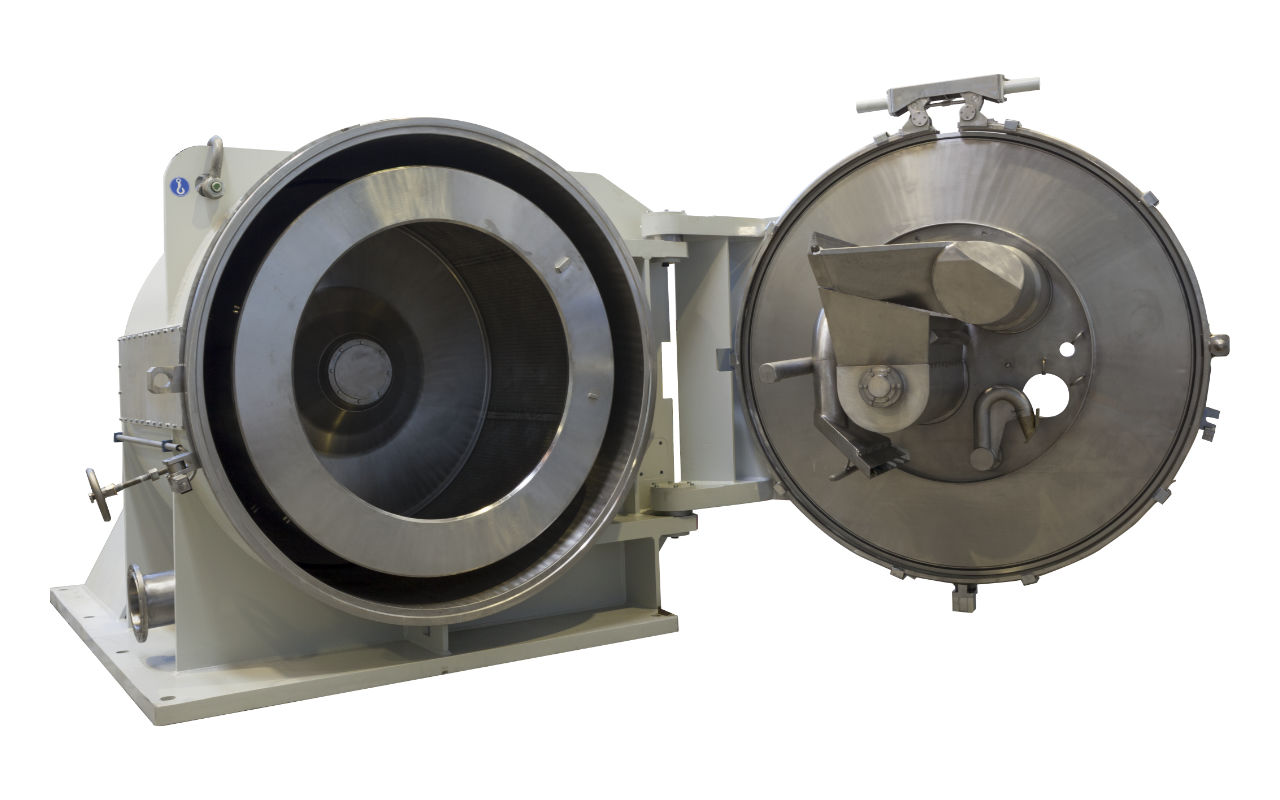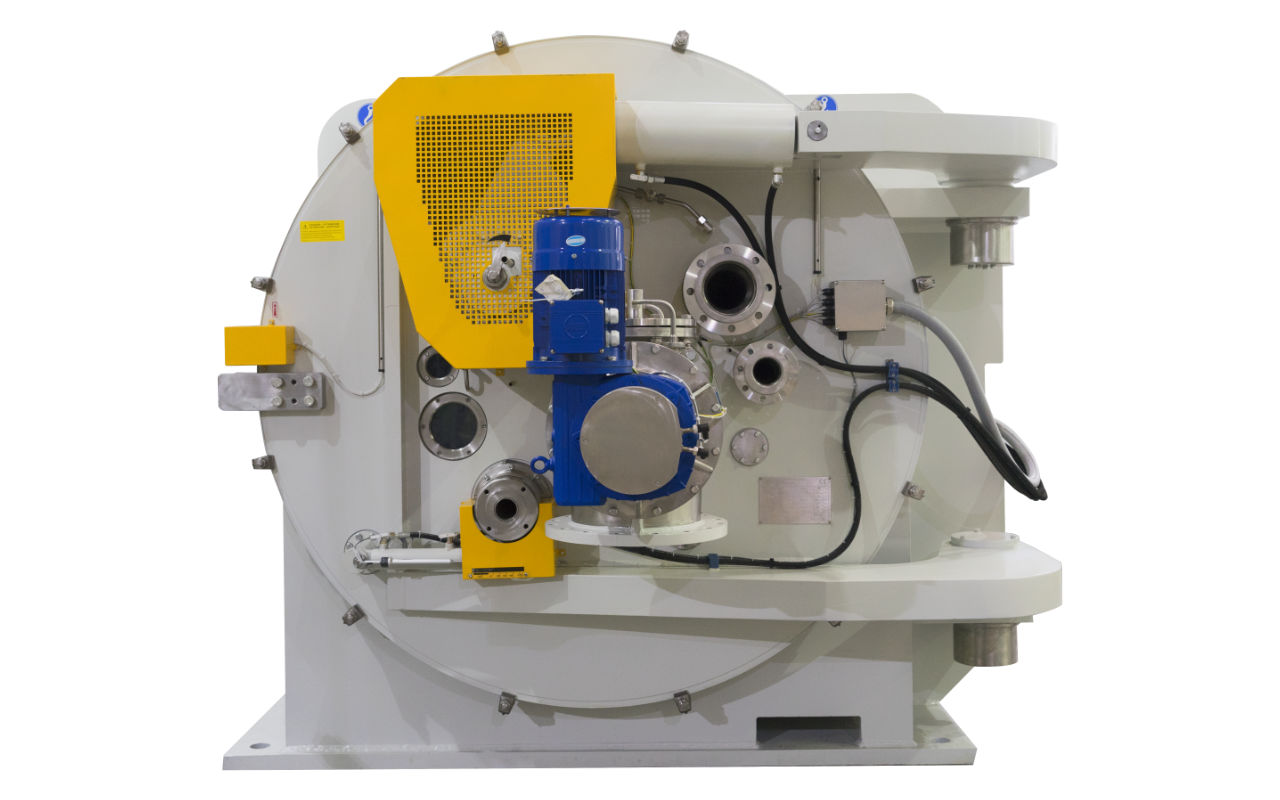Specification
- Perforated basket or siphon basket;
- Visual access to the process area from the front door and inspection ports;
- Work cycle (from the feeding phase to the discharge phase) where the operator cannot come in contact with the product;
- The centrifuge can work in the following operating modes, while it is controlled by PLC and DCS: fully automatic, semi-automatic, manual
- Installation on concrete or carbon steel inertia base with anti-vibration dampers;
- Oil bearings lubrication for all models;
- Knife blade fixed without use of bolts;
- Discharge even at maximum speed;
- The horizontal basket ensures a uniform load of the cake;
- Solids discharge via chute or screw conveyor;
- Complete removal of the residual heel cake via a nitrogen pressure system from the external part of the basket (“blow back”);
- Skimmer for evacuation of the proteins or fine fibers floating on the cake retentate water surface;
- The endless filter cloth, thermo-welded, in polypropylene or other materials of various sizes and micrometry, is easily replaceable;
- Materials in contact with the product: all stainless steels and special alloys available, such as AISI 316L, AISI 904L, Hastelloy, Monel, ALLOY 59, 254 SMO, NICKEL, TITANIUM, SAF 2205. HALAR coatings (ECTFE), also antistatic and FDA certificated, Teflon ETFE, HARD RUBBER
Technical Data
| Centrifuge Model: HX/L/S | Basket Diameter | Filtering surface | Cake volume | Max load | Max speed | G factor | Weight with no motor | With inertia base and motor |
|---|---|---|---|---|---|---|---|---|
| Unit | mm | m² | dm³ | kg | RPM | xg | kg | kg |
| 1250/650 | 1250 | 2,55 | 346 | 484 | 1300 | 1180 | 6500 | 16000 |
| 1250/800 | 1250 | 3,14 | 426 | 596 | 1300 | 1180 | 8000 | 20000 |
| 1300/850 | 1300 | 3,47 | 500 | 700 | 1250 | 1135 | 8500 | 21000 |
| 1700/920 | 1700 | 4,91 | 922 | 1290 | 1030 | 1000 | 14000 | 35500 |
| 1700/1150 | 1700 | 6,14 | 1152 | 1614 | 1030 | 1000 | 15500 | 42000 |
| 1850/1300 | 1850 | 7,55 | 1520 | 2130 | 985 | 1003 | 26000 | 58000 |
| 2000/1440 | 2010 | 9 | 2023 | 2832 | 950 | 1000 | 32500 | 70000 |
| 2100/1550 | 2100 | 10,2 | 2328 | 3260 | 900 | 950 | 33500 | 73000 |
Functioning
Production
Feeding
The suspension is fed by two feed pipes (main and secondary pipes) into the centrifuge and under the influence of centrifugal force, it moves towards the filter cloth, placed on the basket. The solid part of the suspension is retained by the filter cloth forming a cake, while the liquid filters through the cake, the filter cloth and the holes of the back of the basket in the syphon chamber annular ring. The liquid is removed via syphon installed at the rear side of the basket.
The use of the secondary feed pipe allows a formation of a pond at the front side of the basket and a skimmer, which can be submerged into the pond, can remove the proteins or the fibres, which float over the pond surface, as they are lighter than the water.
After a determined number of cycles, a cleaning phase of the knife is activated with high-pressure nozzles, without interrupting the same productive cycle.
Main pipe feeding phase
Secondary pipe feeding phase
Skimmer
Centrifugation
Once completed the feeding phase, the centrifuge is accelerated to the maximum speed allowable for the product being processed and maintained for a given time to achieve the required level of residual moisture of the product being processing. At the end of the centrifugation, the centrifuge decelerates to the discharge speed for discharging.
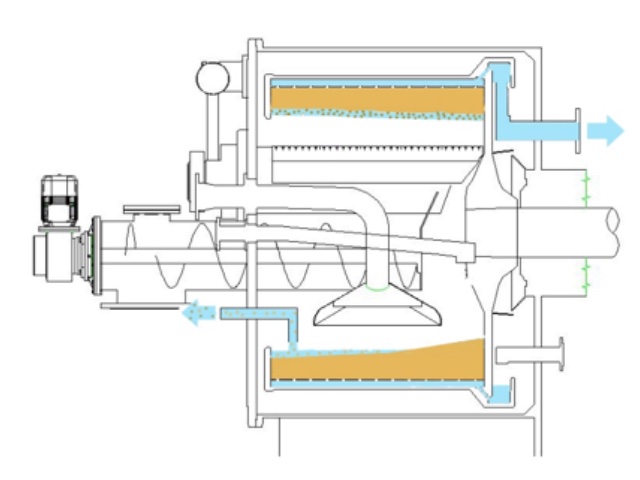
Discharge
The discharge takes place by means of the peeling knife. After reaching the discharge speed, the knife increment command is activated and the knife starts cutting the cake conveying the product into the screw conveyor and from it to the dryer.
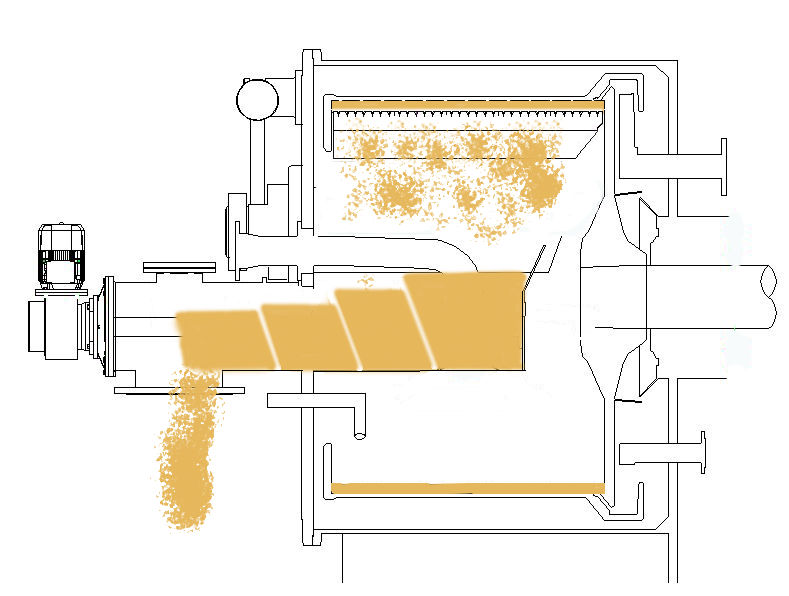
Back wash
After a number of cycles, the heel cake can becomes less and less permeable, so that thanks to the action of the “back wash” system, which can resuspend it, it can becomes regenerated and filterable again, making it not necessary for its removal for many cycles (normally once a day).
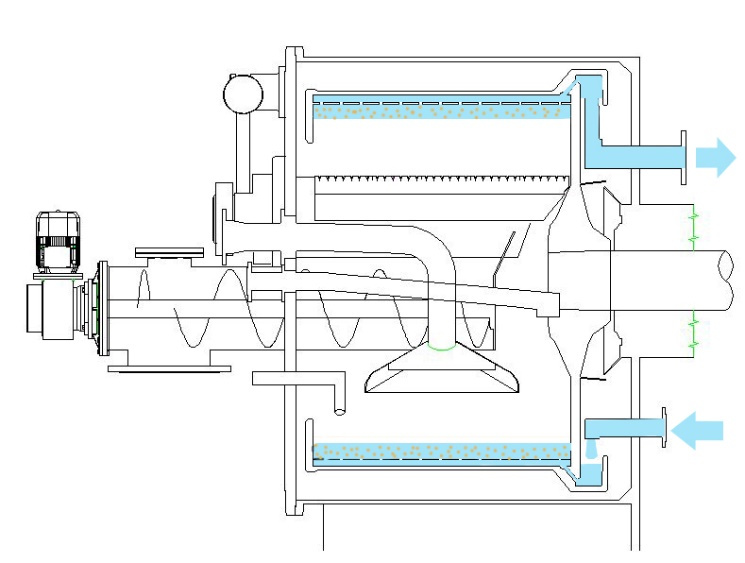
Heel cake removal
After a certain number of “back washes”, the heel cake that remains on the filter cloth can be removed, to improve the filterability of the product, by means of a large water flow through the main feed pipe. The removed product is collected by the knife, positioned close to the filter cloth, and conveyed through the screw conveyor into the solids recovery systems.
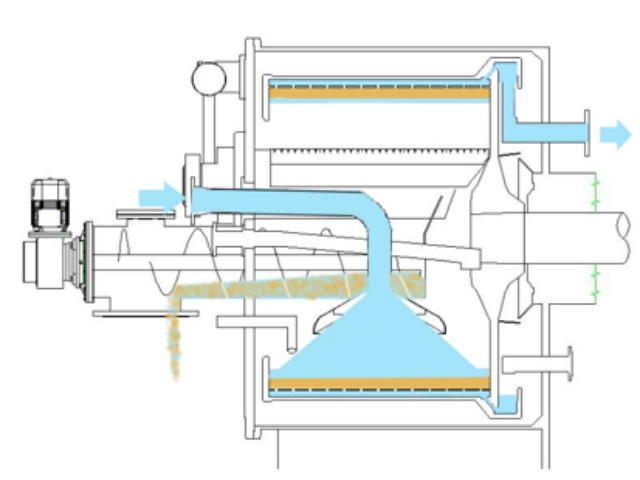
Cleaning (C.I.P.)
The centrifuge should be cleaned every week to avoid the possibility of "bacteria growth". The centrifuge cleaning system, fully automated, comprises of 2 main stages: Washing Machine Effect and cleaning with spray balls, which can be alternated to achieve maximum cleaning and to optimize the consumption of the cleaning liquid.
Washing Machine Effect (WME)
The centrifuge is filled with the washing liquid up to a predetermined height and is put in rotation. During the sequence of the automatic washing the basket rotates clockwise and counter clockwise; the knife goes in and out so that the washing liquid reaches all the points and areas of the process area, including the discharge chute.
Spray balls cleaning
The washing liquid is sprayed through spray balls on all the surfaces of the screw conveyor and the door to completely remove the residues of product still present on the surface of these components.

 Italiano (it-IT)
Italiano (it-IT)  Español (España)
Español (España)  Deutsch (Deutschland)
Deutsch (Deutschland)  Français (France)
Français (France) 